NRAO eNews
Volume 11, Issue 3
8 March 2018
NRAO eNews
Volume 11, Issue 3 • 8 March 2018

Upcoming Events

2018 NRAO Postdoctoral Symposium
Mar 19 - 20, 2018 | Socorro, NM

NRAO/LBO Community Day at Caltech
Mar 27 - 28, 2018 | Pasadena, CA

Synthesis Imaging Workshop
May 16 - 23, 2018 | Socorro, NM

NRAO/LBO Community Day at U. Toronto
Jun 4 - 5, 2018 | Toronto, Canada

NESS Meeting-in-a-Meeting
Jun 5 - 6, 2018 | Denver, CO

Astrophysical Frontiers in the Next Decade and Beyond
Jun 26 - 29, 2018 | Portland, OR

Tracing the Flow: Galactic Environments and the Formation of Massive Stars
Jul 2 - 6, 2018 | Lake Windermere, UK
2018 Jansky Fellowships Awarded
The National Radio Astronomy Observatory (NRAO) Jansky Fellowship program provides outstanding opportunities for research in astronomy. Jansky Fellows formulate and carry out investigations either independently or in collaboration with others within the wide framework of interests of the Observatory. The program is open each fall to candidates with interest in radio astronomy instrumentation, computation, and theory, and prior radio experience is not required. Multi-wavelength projects leading to a synergy with NRAO instruments are encouraged. We are pleased to announce that four new Jansky Fellows will be joining NRAO in the fall of 2018.
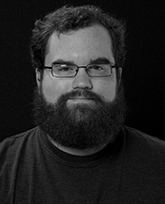 |
Nolan Denman is a Ph.D. candidate at the University of Toronto's Dunlap Institute for Astronomy and Astrophysics working with Keith Vanderlinde. Nolan will bring his expertise in correlator design, GPU processing, high-performance computing, and instrumentation associated with the Canadian Hydrogen Intensity Mapping Experiment (CHIME) to the Central Development Laboratory. |
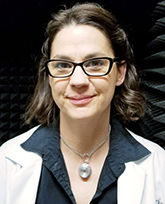 |
Lisa Locke is currently a postdoctoral research engineer in the Millimetre Instrumentation Group at National Research Council – Herzberg Astronomy and Astrophysics Research Centre. Lisa has extensive experience in phased array feed design, most recently working on the Cryogenic Phased Array Feed (CryoPAF) project. Lisa will bring her considerable experience in receiver design and development to the Central Development Laboratory. |
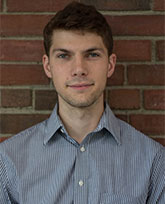 |
Ryan Loomis is currently a Ph.D. candidate at Harvard University working with Karin Öberg. Ryan's thesis work on the physical and chemical processes which govern the star formation process in our Galaxy has been complemented by his extensive work on algorithmic improvements to radio astronomical imaging and information extraction. Ryan will be hosted at NRAO in Charlottesville. |
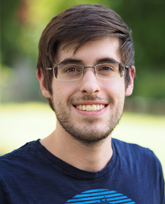 |
Brian Svoboda is currently a Ph.D. candidate at the University of Arizona – Steward Observatory. Brian's thesis work with Yancy Shirley has expanded our understanding of the earliest phases of the star formation process through physical and chemical studies of its large-scale structure. Brian will continue his extensive use of NRAO facilities to further our understanding of the star formation process as a Jansky Fellow at NRAO Socorro. |
IAU Division B Announcement
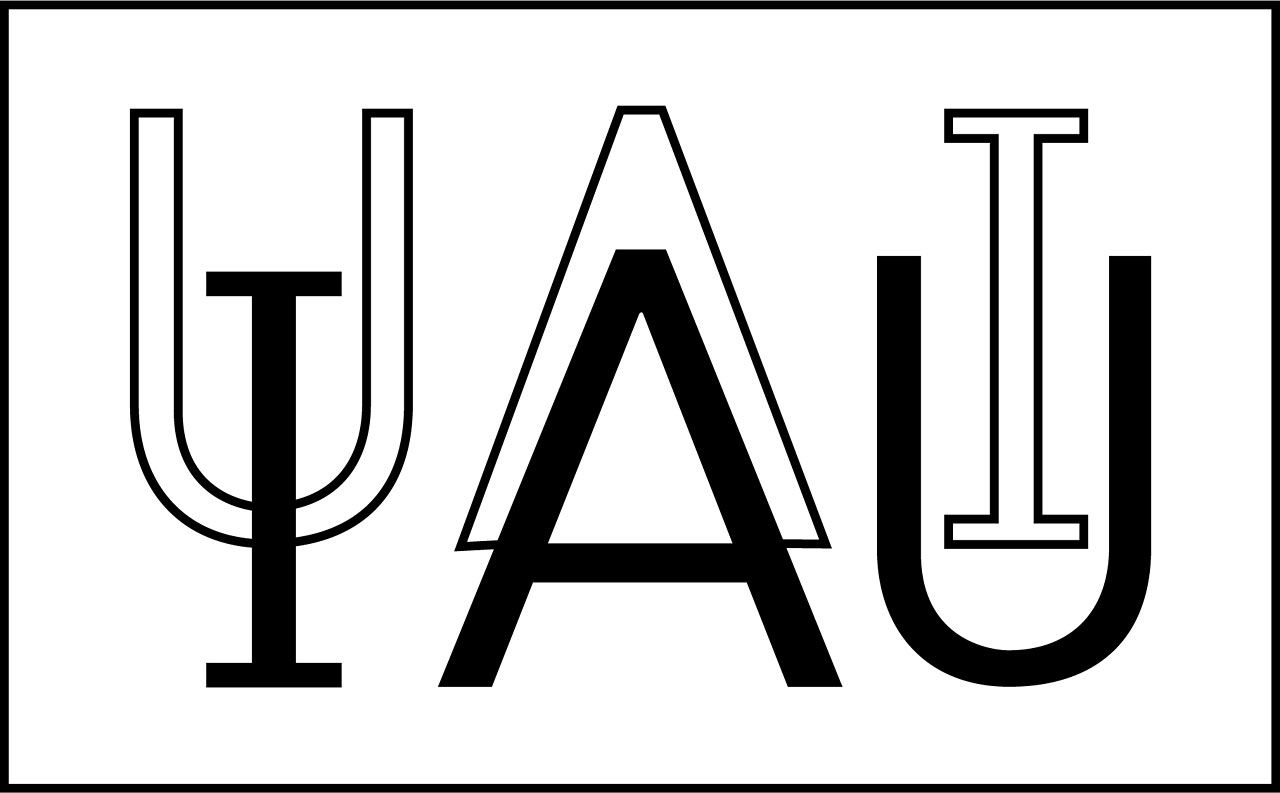
Dear Members and Associates of IAU Division B and of Commission C3,
We would like to draw your attention to the meeting that will be organized at the XXXth General assembly of the IAU in Vienna, Austria by the IAU/URSI Working Group on Historic Radio Astronomy: The history of large single dish projects and lessons learned.
The meeting is scheduled on 27 August during the Division Meeting days; the program is below.
Registration and all other administrative matters are organized through the GA website.
IAU General Assembly 2018
Vienna, Austria
Commission B4
IAU/URSI Working Group on Historic Radio Astronomy
“The history of large single dish projects and lessons learned”
27 August 2018, 13.30 -17.00
- Jaap Baars: Review of the evolution of large single dishes (30 mins)
- Simon Garrington: Jodrell Bank telescopes (20 mins)
- Douglas Bock: Parkes Telescope (Australia, 20 mins)
- Axel Kraus: Effelsberg homology telescope (20 mins)
- Coffee break
- Ken Kellermann: The Largest Feasible Steerable Telescope (30 mins)
- Carsten Kramer: Pico Veleta telescope (20 mins)
- David Hughes: Large Millimeter Telescope in Mexico (20 mins)
- Bo Peng: FAST spherical telescope (20 mins)
ngVLA Program News

ngVLA Science Book
The ngVLA science case volume is in preparation and is a major deliverable to the Astronomy 2020 Decadal Survey. This science volume is being crafted by the ngVLA Science Advisory Council, in consultation with the astronomical community at large, and the ngVLA Project Scientist. The volume will provide an extremely useful summary of the ngVLA Key Science Mission for Astro 2020 panel members, as well as demonstrate the Project's firm handle on the associated technology requirements and cost, and will be published in the Astronomical Society of the Pacific monograph series. This will ensure that the book and individual chapters will be listed in the SAO/NASA Astrophysics Data System for maximum visibility to the Astro 2020 panel members.
An initial table of contents identifying potential lead authors will be updated regularly. If you would like to contribute a chapter, please contact the appropriate Science Working Group (SWG) Chair and download the necessary template and instructions. First Draft chapters are due to either SWG chairs or the ngVLA project scientist by 31 March 2018. Additional contributions for the final book will still be accepted after this.
Astrophysical Frontiers in the Next Decade and Beyond
26 – 29 June 2018 | Portland, Oregon
Registration is open for Astrophysical Frontiers in the Next Decade and Beyond: Planets, Galaxies, Black Holes, and the Transient Universe. This ambitious conference will bring together a large cross-section of the multi-wavelength astronomical community to discuss how best to tackle the most pressing astrophysical questions in the near-future. This conference will consist of plenary sessions of invited speakers and three parallel sessions that will include invited and contributed presentations covering Origins of Exoplanets and Protoplanetary Disks; Mechanisms of Galaxy Evolution; and Black Holes and Transient Phenomena. While this meeting is sponsored by NRAO, the science areas explored are truly multi-wavelength/messenger, and the science program has strong representation from communities across the electromagnetic spectrum. We hope to see you in Portland in June!
Career Opportunities
The ngVLA Project is interviewing candidates for a:
Community-Driven Activities
Given the success of our first round of ngVLA Community Studies, a second round was initiated to tackle some of the most pressing questions unveiled by the initial studies. The primary objective for the second round of community studies is to further develop the Key Science Goals outlined in Memo #19. Studies and simulations were asked to focus on addressing these key science goals, and better quantifying the expected performance of the array while providing additional supporting technical requirements.
The second call yielded 12 approved scientific studies. All accepted Community Studies efforts from this second round are expected to write up their findings as part of a peer-refereed journal article or ngVLA memo, and present their progress/final results at the Astrophysical Frontiers in the next Decade and Beyond conference, 26-29 June 2018 in Portland, Oregon.
American Astronomical Society Meeting – Special Session
NRAO held a special session at the January 2018 American Astronomical Society meeting in National Harbor, Maryland titled The Very Large Array Today and Tomorrow. This session included oral presentations and ~30 coordinated posters. We would like to thank all community participants for making this special session a resounding success! All presentations have been posted online.
ALMA Program News
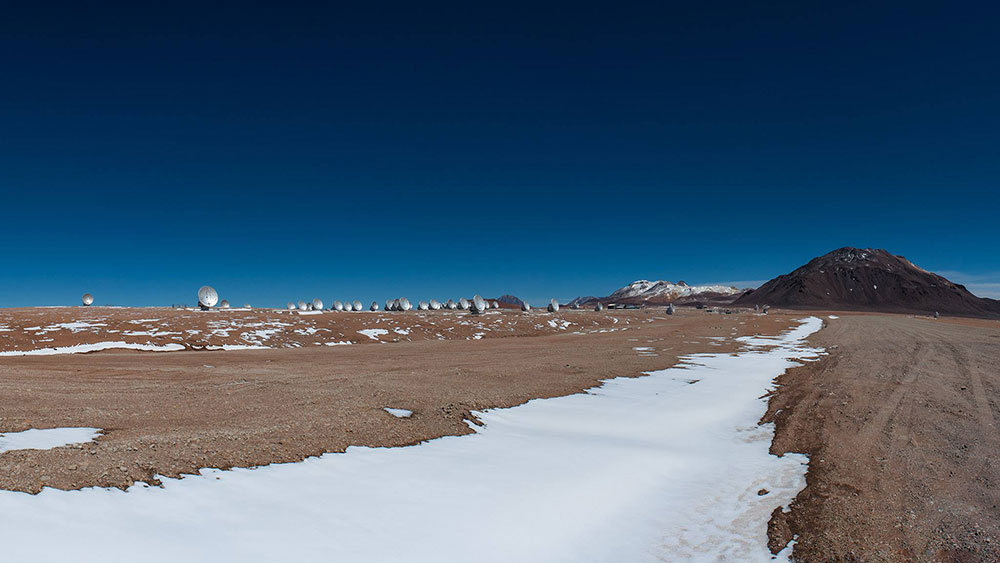
Sergio Otarola
[click to enlarge]
ALMA Cycle 5
ALMA observing has been slightly delayed by repairs of the electrical
distribution system at the Array Operations Site. Principal Investigator observations are
expected to resume in early March in configuration C43-5 (0”.55 beam
at 100 GHz, 15m to ~1.4km baselines). The configuration will shrink to more compact configurations over the next few months.
2018 North American ALMA Science Center (NAASC) Workshop
The 2018 NAASC Workshop – Magnetic Fields or Turbulence: Which is the
critical factor for the formation of stars and planetary disks? – was held
6-9 February 2018 in Hsinchu, Taiwan, and was attended by 113 investigators
from around the world. Participants engaged in vigorous discussions
regarding the relative importance of the magnetic field, turbulence, and
scattering in star formation processes spanning a wide range of spatial
scales. High resolution observations, particularly of protoplanetary
disks, from telescopes across the electromagnetic spectrum were highlights
of the meeting.
ALMA Ambassadors
ALMA Ambassadors are postdocs who host a local proposal preparation workshop at their home institutions – an abbreviated version of the Community Day and NRAO Live! events from previous observing cycles – in advance of the Cycle 6 ALMA proposal deadline in April 2018. Upcoming ALMA Ambassador Events and Ambassadors are listed below.
| Date | Location | ALMA Ambassador |
| 26 March | Australian National University | Katie Jameson |
| 27 March | Johns Hopkins University | Meredith McGregor & Kate Rowlands |
| 27 March | Stanford University | Ian Czekala |
| 28 March | Universidad Diego Portales | Loreto Barcos |
| 28 March | Rochester Institute of Technology | Dary Ruiz-Rodriguez |
| 29 March | Northwestern University | Deanne Coppejans |
| 30 March | University of Iowa | Rui Xue |
| 30 March | Columbia University | Statia Cook |
| 10 April | University of Arizona | I. Shivaei, S. Ertel & N. Ballering |
| Tentative | ||
| 10 April | University of Oklahoma | Patrick Sheehan |
ALMA Director
As announced by the Joint ALMA Observatory, Sean Dougherty took up the position of ALMA Director beginning 21 February 2018. Sean has been a member of the ALMA Board since 2014, and has been particularly involved in the ALMA Personnel Committee and, since 2015, chaired the ALMA Budget Committee. He has represented Canada’s contributions to a variety of international radio astronomy facilities in the world, and has collaborated on numerous projects with NRAO, the Square Kilometre Array (SKA), the U.S. National Science Foundation, and other scientific organizations.
In Canada, Sean has been Director at the Dominion Radio Astronomy Observatory (DRAO) and Program Director in the Radio Astronomy Program since 2008. As DRAO Director, he was responsible for all activities across science and engineering research and development. As Program Director for the Radio Astronomy Program, he was responsible for operational support of Canadian radio astronomy facilities, including ALMA, the DRAO Synthesis and John A. Galt telescopes, and science support of NRC technology development for the SKA.
Sean has an M.Sc. in Applied Geophysics and a Ph.D. in Astrophysics, both from the University of Calgary.
Please join me in welcoming Sean to the ALMA team and wishing him the greatest success!
ALMA Residencia
The ALMA Residencia is the home for staff and people working temporarily at the Atacama Large Millimeter/submillimeter Array (ALMA). It is sited at the ALMA Operations Support Facility (OSF), close to San Pedro de Atacama in northern Chile. The Residencia was the last major item to be delivered to the ALMA project by ESO and has been in use for several months. Its kitchen will begin operations in March.
ALMA Multicancha
Groundbreaking took place 2 March for an indoor sports facility, or multicancha, at the ALMA OSF. This project, contracted by the AUI/NRAO Office of Chilean Affairs, was made possible by generous, one-time funding contributions from the U.S. National Science Foundation and NRAO, outside normal operations funds, to enhance the living conditions for ALMA staff. The multicancha is to be delivered in mid-2019.
JAO Symposium
The Joint ALMA Observatory (JAO) is hosting a Symposium titled The ALMA Quest for Our Cosmic Origins at the JAO offices in Vitacura, Santiago on Tuesday 27 March 2018. The Symposium is in honor of Pierre Cox’s service as ALMA Director from 2013 to 2017. Under Pierre's leadership, ALMA transitioned from early science to essentially full operations with all antennas operational, achieving high-profile and stunning science results, including impressive images in many fields of astronomy. The symposium will consist of a series of talks that showcase the latest ALMA results on galaxies, star formation, circumstellar disks, and evolved stars.
Frontiers of Experimental Radio Astronomy

[click to enlarge]
The department of Physics and Astronomy at Northwestern University has recently launched a unique series of radio astronomy lectures for the benefit of students, postdocs, and researchers in the fields of physics and astronomy. This lecture series, generously supported by the Heilborn family, is motivated by the large number of sensitive experiments that use radio telescopes to address a range of astrophysical topics from the origin of planets to the physical conditions of the expanding Universe.
Hosted by Farhad Yusef-Zadeh, each lecture focuses on the techniques and history that have distinguished radio astronomy, as well as the remarkable scientific advances enabled by radio-wavelength telescopes and techniques. The series poster (upper left) left describes the 13 invited speakers to date and their individual presentations, each of which was professionally recorded and can be viewed online. Going forward, the series will feature three new lectures each year.
These lectures avoid astronomical jargon and are broadly accessible to the numerous Northwestern University physics, engineering and chemistry students, postdocs, and faculty who attend. Our speakers have described new techniques and science highlights from observatories such as the Atacama Large Millimeter/submillimeter Array, the Arecibo Observatory, the Jansky Very Large Array, the Low-Frequency Array, and the Green Bank and South Pole telescopes. Each speaker has also emphasized the power of innovative observational and experimental tools for probing the invisible Universe, and how cutting-edge radio-wavelength science engages new generations of students.
Recent Media Releases
Career Opportunities
Calibration Research Associate: The NRAO invites applications for a next-generation VLA (ngVLA) Calibration Research Associate. The successful applicant will work within the ngVLA project team, within the ngVLA Science Support IPT on detailed investigation of the calibration strategies and associated requirements for the ngVLA. The primary focus of this scientific research associate position will be contributing to a high‐level study that develops a calibration strategy for the array in order to understand any implications for the hardware system architecture.
Science Community Support Research Associate: The NRAO invites applications for a next-generation VLA (ngVLA) Science Community Support Research Associate. The preferred duty station will be the NRAO Headquarters in Charlottesville, VA, but the Domenici Science Operations Center in Socorro, NM may also be a possibility. The Research Associate will work with the ngVLA Project Scientist to facilitate and enable cutting-edge science by the community and to help define the ngVLA concept from a user’s perspective. The successful candidate will be an essential part of the ngVLA effort as the project prepares for the Astro 2020 Decadal Survey. The primary focus of this scientific research associate position will be to define the science operations concept for the facility and support community research to define the capabilities of the instrument.
From the Archives
Ellen Bouton

[click to enlarge]
About this month's photo: In November 2001 NRAO – New Mexico hosted the runners and support personnel of the "AAmericans United Flag Across America" run. The transcontinental memorial and fund-raising effort by American and United Airlines employees honored flight crews and victims killed in the 9/11 attacks. The 3,872-mile Boston-to-Los Angeles run – begun 11 October 2001 in Boston and finished 11 November in Los Angeles – represented the intended journey of American Flight 11 and United Flight 175, both of which were flown by terrorists into the World Trade Center.
The flag run arrived at the Very Large Array (VLA) early in the post-midnight morning of Monday 5 November and departed after sunrise that same morning, en route to the Arizona border. Drivers, runners, and support personnel stayed overnight at the VLA. During the night, a "VLA Night Owl Run" kept the flag moving around the VLA area until the group, including NRAO – New Mexico employees, started west after dawn. Left to right in this early morning photo: airline person, Steve Aragon, Ramon Molina (with American flag), unknown behind Molina, Dee Friesen (Captain for American Airlines and New Mexico flag run coordinator), unknown hidden behind Broilo, Bob Broilo (with New Mexico flag), Richard Murillo.
Caption information is from a January 2002 NRAO Newsletter article by Dave Finley; thanks to Jim Ulvestad for photo IDs.
From the Archives is an ongoing series illustrating NRAO and U.S. radio astronomy history via images selected from our collections of individuals' and institutional papers. If readers have images they believe would be of interest to the Archives, please contact Ellen Bouton.

